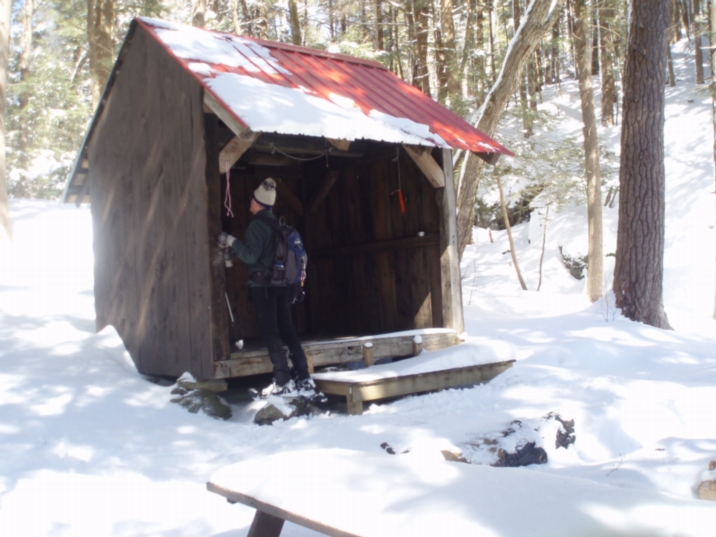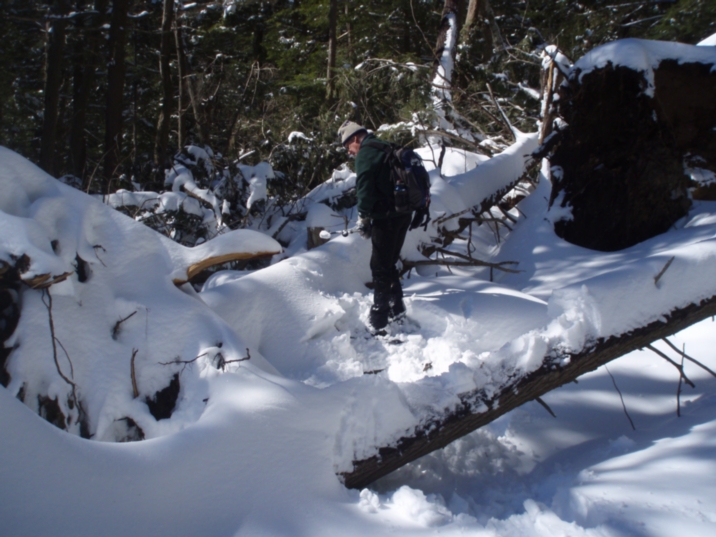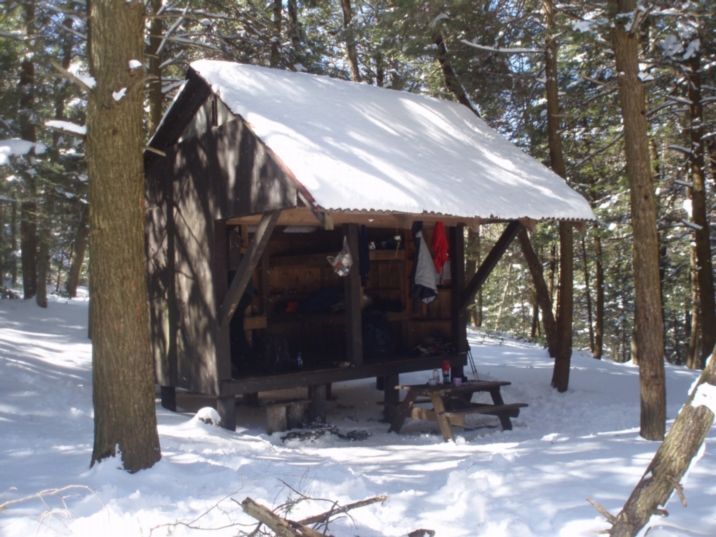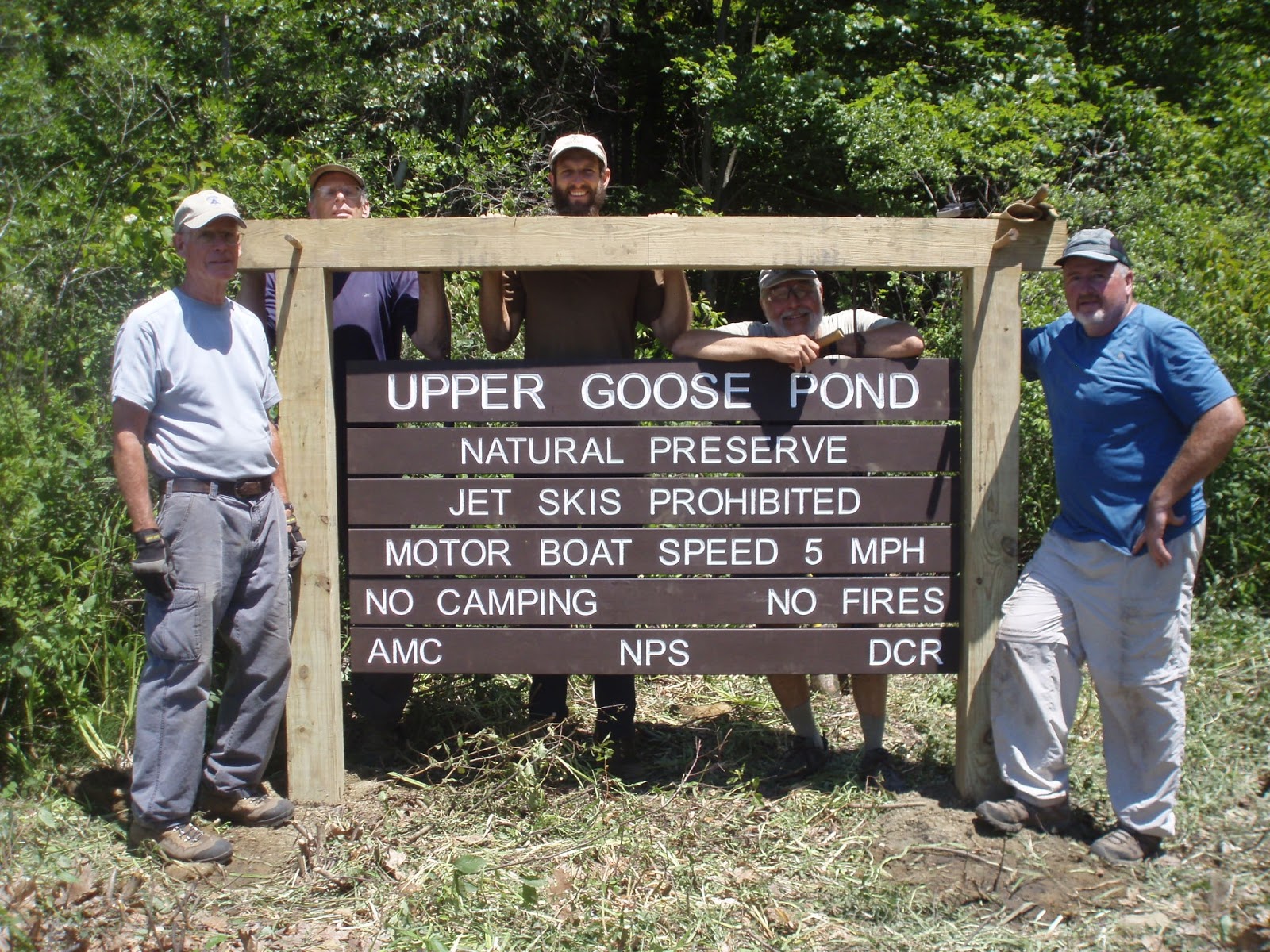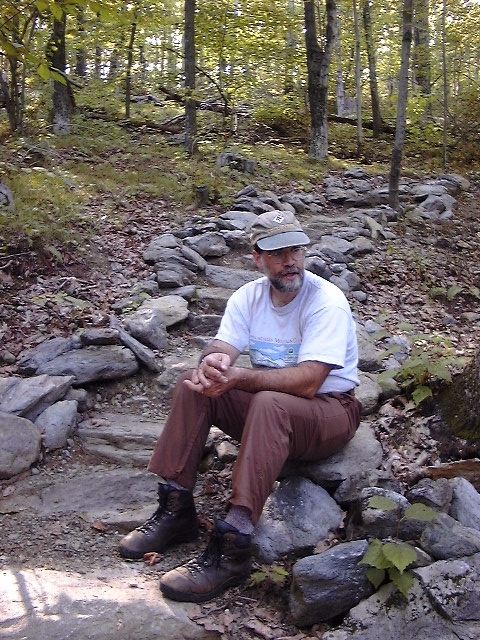Clearly we can't begin to take down every tree along the trail that is not 100% healthy--nor would we want to. All parts of a tree's life cycle are important to a healthy forest. Standing dead trees provide valuable wildlife habitat. I would imagine you have seen the large oblong holes above a mound of wood chips at the base of a dead tree. This is the work of the Piliated Woodpecker looking for insects. These holes in turn provide habitat to other animals. Trees that are down on the ground provide soil nutrients and more insect habitat as they decay further.
Hikers are expected to be responsible for their own safety while in the backcountry. However, when places for hikers to camp or congregated are created, there is an added level of responsibility for trail managers. So at an overnight site, as trees near shelters, or tenting and eating areas reach the end of their lifespan, or a weather event damages large branches or tips trees over, we need to cut them down proactively to reduce the likelyhood they will collapse unexpectedly injuring hikers or damaging structures.
So that mission found Jim, Don and Cosmo headed up the power line right of way that provides the most direct access to the AT. While very steep and eroded by ATV use in several locations, it saves a five mile hike on the AT.
The lingering snow was crusty as we made the steep climb providing good footing in most places. Under the ice in the rutted ATV tracks water was flowing well, and although we postholed in a few places, snow conditions were pretty good. At the Trail we found about a foot of snow, fairly well packed by previous travelers.
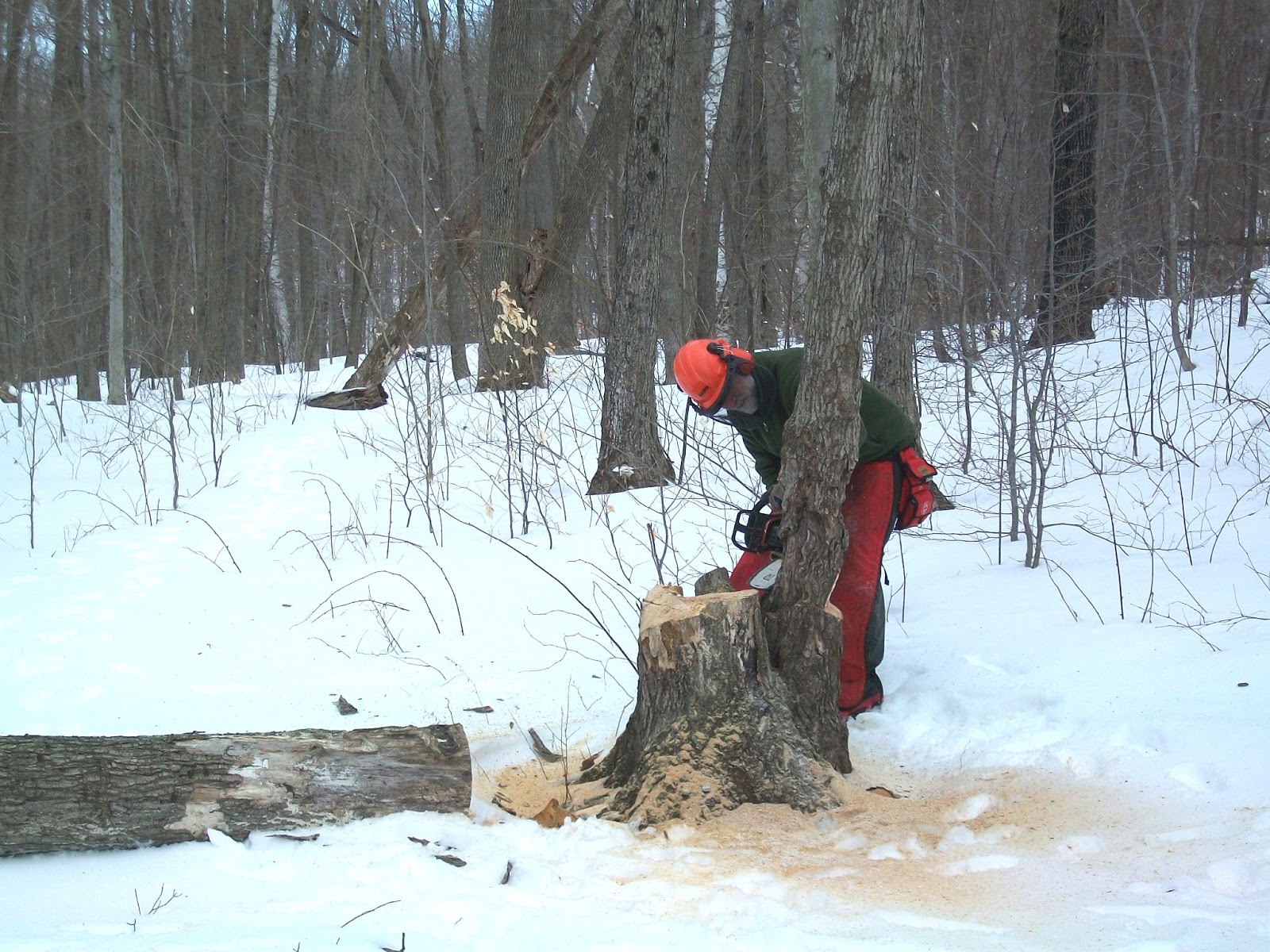 |
| Cosmo fells two hazard trees |
Note that unlike most of our overnight sites, Crystal Mtn has no shelter or tent platforms. There are areas that have been cleared of vegetation where tents can be pitched as well as a privy. Last season, we carried in a picnic table and a 'bear box' for food storage--significantly upgrading this 'primitive' site. In addition, this campsite is also the the furthest one from a road crossing on the AT in Massachusetts.
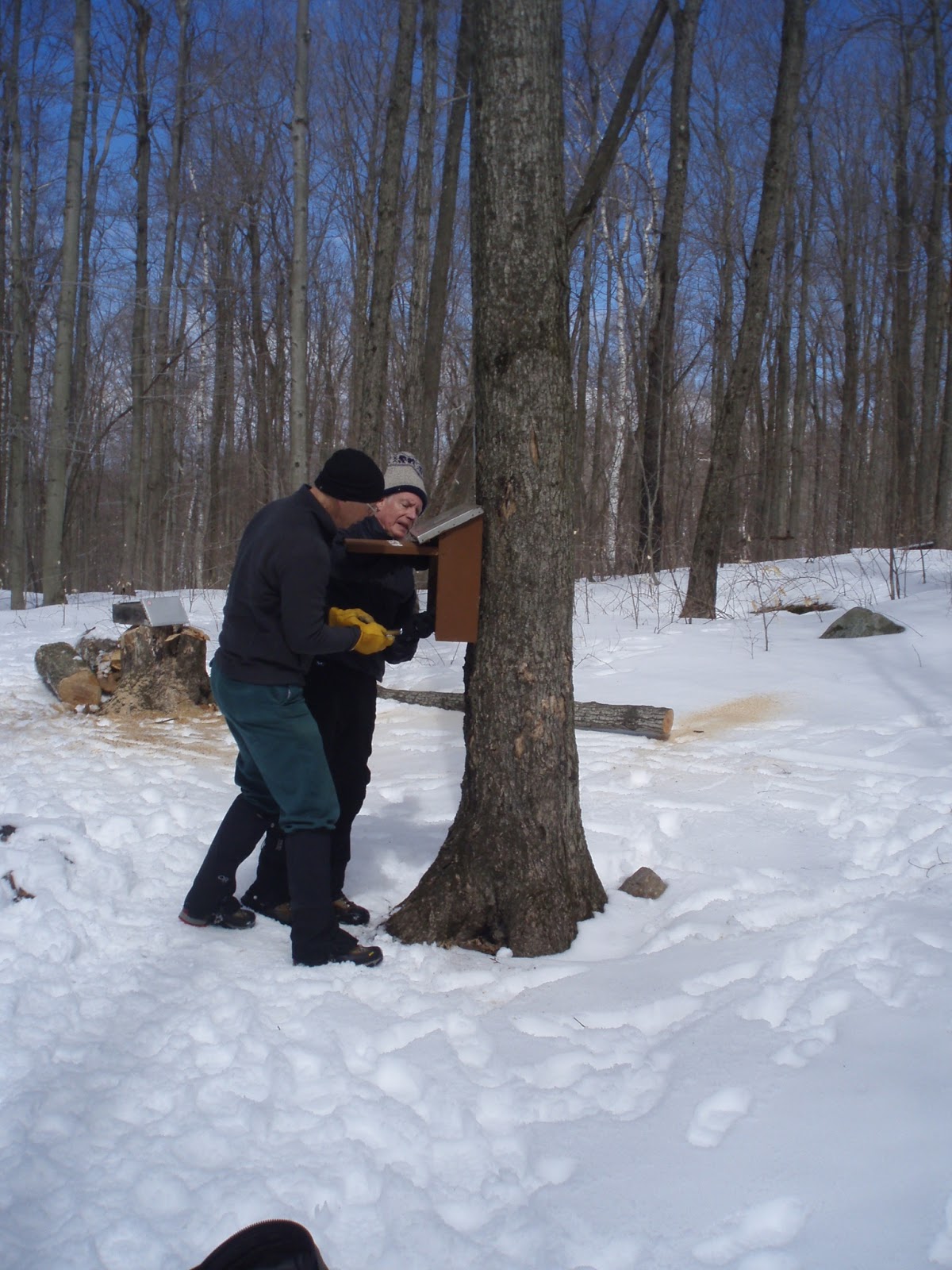 |
| "Tapping" a maple to install the register box |
After a quick lunch at the picnic table (nice not to have to sit in the snow), we let Don have the 'honor' of toting the old box back down--he had the same honor of bringing up the new one.
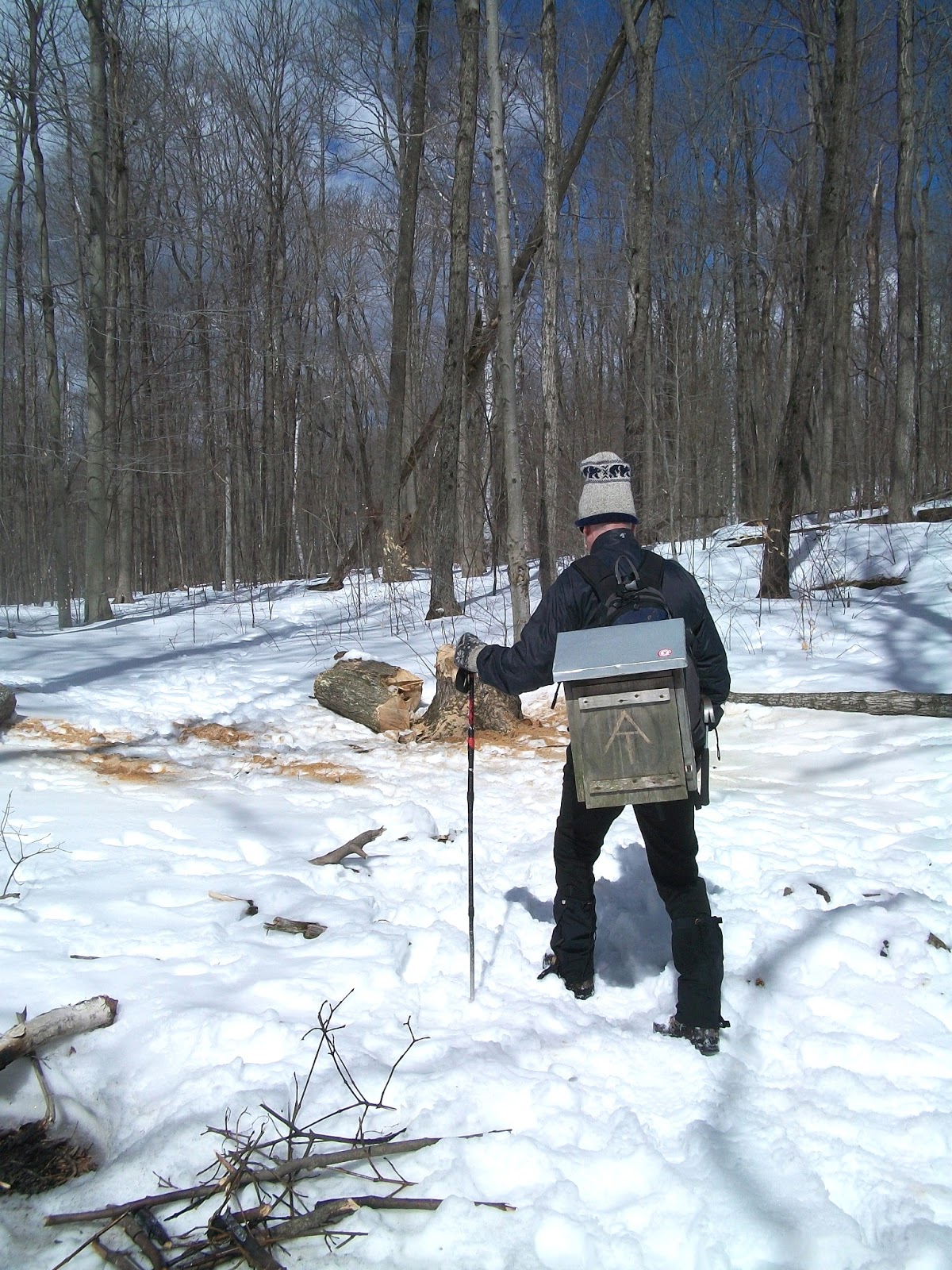 |
| Look, a walking register box. |
